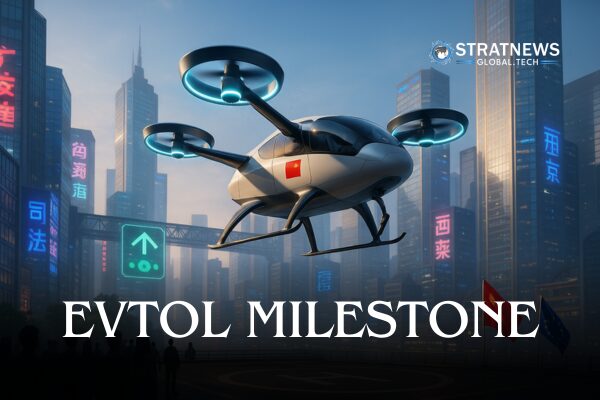China Tests First eVTOL Supply Delivery to Offshore Oil Platform
A Chinese-developed electric vertical takeoff and landing (eVTOL) aircraft has successfully completed its first offshore delivery, marking a major step forward in China’s low-altitude sea-land logistics, the mission, carried out by the China National Offshore Oil Corporation (CNOOC), highlights the nation’s progress in adopting innovative aviation technologies.
Supply Flight to Offshore Platform Completed in Under an Hour
The aircraft carried essential supplies including fresh fruit and medicines. It took off from Shenzhen, Guangdong Province, and completed a 58-minute journey to an offshore oil platform located around 150 kilometres from the coast. This journey would have taken over 10 hours by traditional sea routes.
The mission underlined the advantages of eVTOL over conventional transport options such as ships and helicopters. According to Ren Yongyi, deputy general manager at CNOOC’s Shenzhen Branch, eVTOLs offer reduced operational costs, faster response times, zero carbon emissions, and increased flexibility for takeoff and landing.
eVTOL Reduces Costs and Emissions Compared to Traditional Options
Historically, offshore platforms in China have relied on ships for resupply. These trips can take more than 10 hours, making it difficult to respond quickly to emergencies. While helicopters have been used during urgent situations, their high cost limits frequent deployment.
In contrast, eVTOL aircraft present a greener and more cost-effective solution. Their ability to operate in confined spaces makes them well-suited to offshore operations.
V2000CG CarryAll Showcases New Era in Low-Altitude Logistics
The eVTOL used in the mission, the V2000CG CarryAll, was developed by Shanghai-based company AutoFlight. With a maximum takeoff weight of two tons, it combines vertical takeoff and landing features with a fixed-wing design for cruising.
This delivery marks the integration of cutting-edge aviation with real-world logistics. It also signals the growing role of low-altitude technologies in supporting traditional sectors such as energy.
“with inputs from Reuters”


